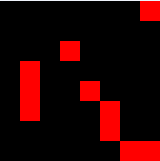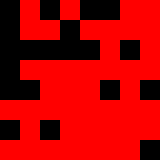Re: HSC 2014 4U Marathon - Advanced Level
Wonderful!
Wonderful!
For x < 0, define f(x) = af(-x) + bf(-2x)+cf(-3x) (*) for some undetermined constants a,b,c.
It is clear that this will satisfy the differentiability and boundedness assumptions of f for positive x, just by the laws of how differentiation behaves with respect to addition, constant multiplication, and composition. This means that the only thing to worry about is how the definitions of f for positive x and negative x "match up" at 0.
If we let x -> 0- in (*) and use continuity, we get f(0) = (a+b+c)f(0).
Similarly, since we have differentiability, we can differentiate (*) (at least twice) and then use continuity of derivatives to get:
f'(0) = (-a-2b-3c)f'(0).
f''(0) = (a+4b+9c)f''(0).
Now if we choose our a,b,c to satisfy the simultaneous equations:
a+b+c = 1
-a-2b-3c = 1
a+4b+9c = 1
(this is a short exercise in simultaneous equations, but I cbb doing it again right now) then from the earlier discussion the function and its first two derivatives will match up continuously, and we are done.





